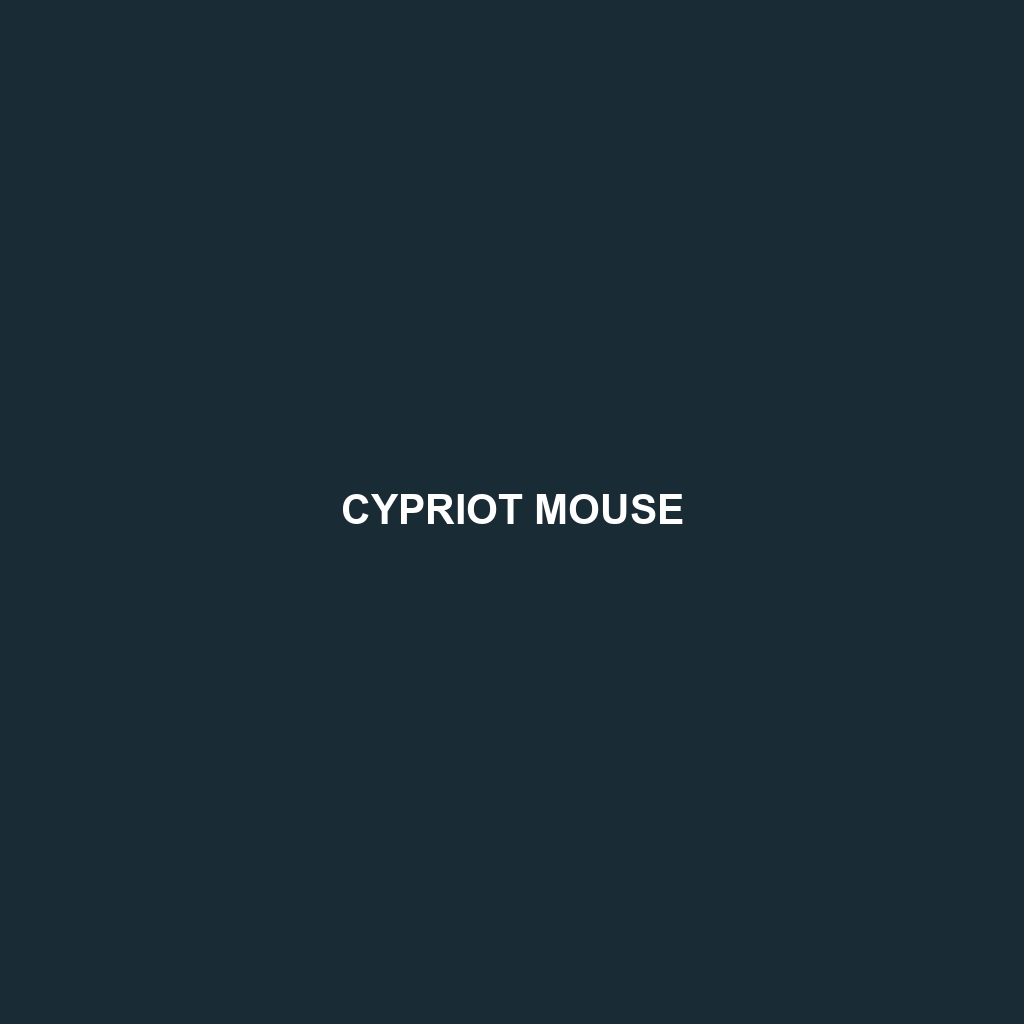Common Name: Cypriot Mouse
Scientific Name: Mus cypriacus
Habitat:
The Cypriot Mouse is primarily found in the Mediterranean island of Cyprus. It thrives in a variety of environments, including scrubland, agricultural areas, and rocky terrains. This species prefers habitats with ample ground cover, such as grasses and shrubs, which provide shelter from predators and suitable conditions for nesting.
Physical Characteristics:
The Cypriot Mouse is a relatively small rodent, typically measuring between 8 to 10 centimeters in length, excluding the tail. Its fur is predominantly light brown with subtle darker patches, offering excellent camouflage against its natural surroundings. The species features large ears, a pointed snout, and a long, slender tail that is approximately as long as its body. These distinctive traits make the Cypriot Mouse easily recognizable among other species.
Behavior:
Known for its nocturnal habits, the Cypriot Mouse is most active during dusk and dawn. It exhibits social behaviors, often living in small colonies. Their agility and quick reflexes enable them to evade predators effectively. Additionally, they demonstrate an array of vocalizations for communication, which can pique the interest of researchers and wildlife enthusiasts alike.
Diet:
The Cypriot Mouse is primarily herbivorous, feeding on seeds, fruits, and various plant materials found in its habitat. This diet not only sustains the mouse but also plays a crucial role in seed dispersal and plant growth within its ecosystem. Occasional consumption of insects adds protein to their diet, particularly during the breeding season.
Reproduction:
Breeding typically occurs in the spring and summer months, with females giving birth to litters of 3 to 6 offspring after a gestation period of about 21 days. The young are born hairless and blind, requiring extensive maternal care. The Cypriot Mouse reaches sexual maturity within six weeks, contributing to its population sustainability.
Conservation Status:
The Cypriot Mouse is currently classified as endangered due to habitat loss and fragmentation from urban development and agricultural expansion. Conservation efforts are crucial to protect this unique species and its natural habitat.
Interesting Facts:
One fascinating aspect of the Cypriot Mouse is its role in local folklore and mythology, often depicted in stories and cultural references in Cyprus. Additionally, its ability to adapt to varying environments makes it a subject of interest in studies of wildlife resilience.
Role in Ecosystem:
The Cypriot Mouse plays a vital role in its ecosystem as a herbivore, contributing to plant propagation through seed dispersal. They also serve as a food source for a variety of predators, including birds of prey and snakes, thus maintaining a balance within the food web of their habitat.
